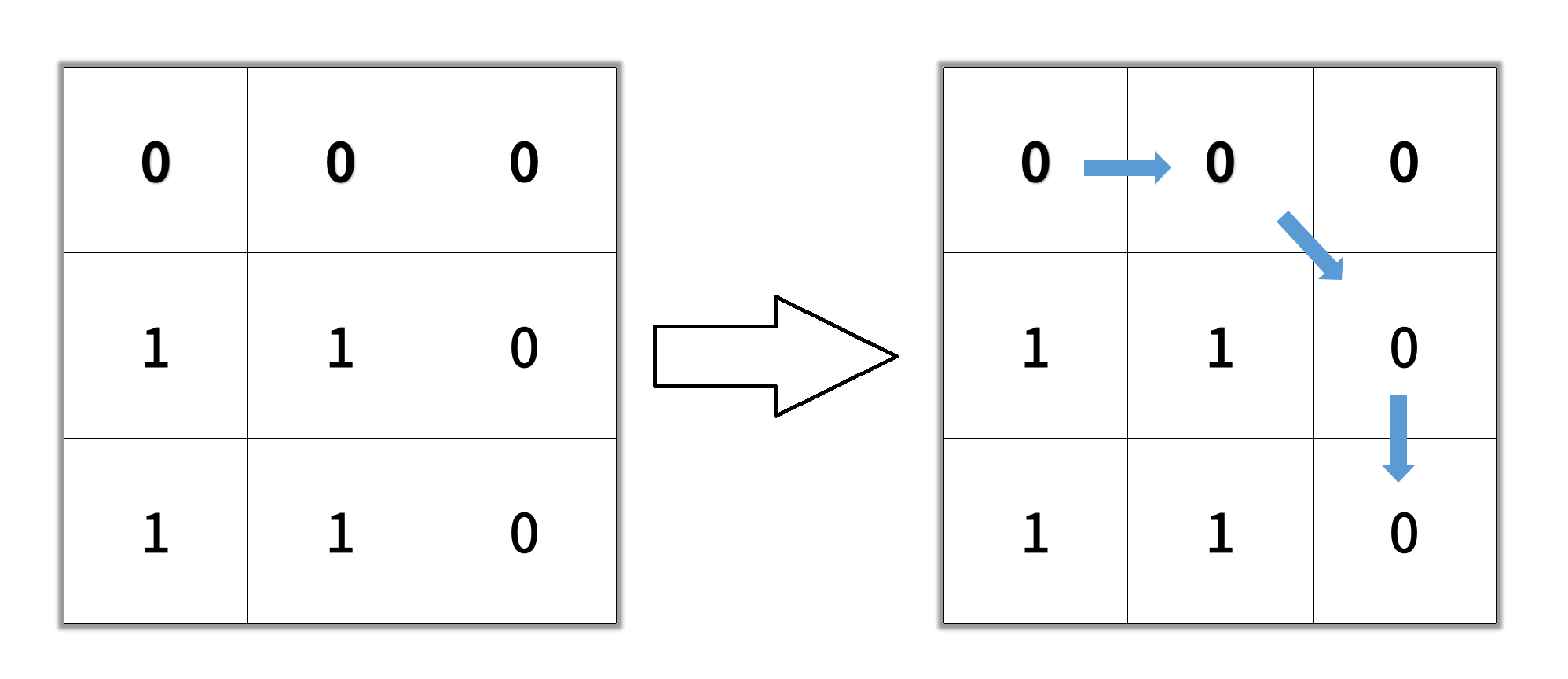Shortest Path in Binary Matrix
Problem Statement - link #
Given an n x n binary matrix grid, return the length of the shortest clear path in the matrix. If there is no clear path, return -1.
A clear path in a binary matrix is a path from the top-left cell (i.e., (0, 0)) to the bottom-right cell (i.e., (n - 1, n - 1)) such that:
- All the visited cells of the path are
0. - All the adjacent cells of the path are 8-directionally connected (i.e., they are different and they share an edge or a corner).
The length of a clear path is the number of visited cells of this path.
Examples #
Example 1:

Input: grid = [[0,1],[1,0]]
Output: 2
Example 2:

Input: grid = [[0,0,0],[1,1,0],[1,1,0]]
Output: 4
Example 3:
Input: grid = [[1,0,0],[1,1,0],[1,1,0]]
Output: -1
Constraints #
n == grid.lengthn == grid[i].length1 <= n <= 100grid[i][j] is 0 or 1
Solutions #
class Solution {
public:
int xy[8][2] = {
{1,1}, {0,1}, {1,0}, {-1,-1}, {0,-1}, {-1,1}, {-1,0}, {1,-1}
};
int shortestPathBinaryMatrix(vector<vector<int>>& grid) {
int s=grid.size();
if(grid[0][0] or grid[s-1][s-1]) return -1;
queue<vector<int>> q;
q.push({0,0,1});
while(!q.empty()){
auto p = q.front();
if(p[0] == s-1 and p[1] == s-1) return p[2];
for(int i=0; i<8; i++){
int x = p[0] + xy[i][0];
int y = p[1] + xy[i][1];
if(x<0 or x>=s or y<0 or y>=s or grid[x][y]) continue;
else{
grid[x][y] = 1;
q.push({x,y,p[2]+1});
}
}
q.pop();
}
return -1;
}
};